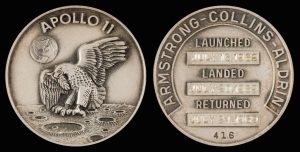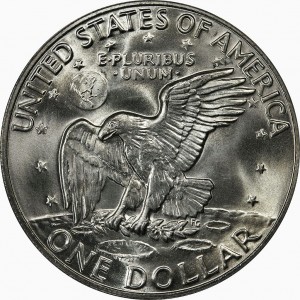 It was July 20, 1969, Neil Armstrong and Edwin “ Buzz” Aldrin, made history by being the first humans to land on Earth’s only natural satellite. A mere 238,900 mile trip began with the launch of the Saturn V rocket from the Kennedy Space Center on July 16, 1969, with Michael Collins who orbited over the moon in the command module, the trip fulfilled the promise of President John F. Kennedy who said to congress on May 25, 1961, “I believe that this nation should commit itself to achieving the goal, before this decade is out, of landing a man on the moon and returning him safely to the earth.”
It was July 20, 1969, Neil Armstrong and Edwin “ Buzz” Aldrin, made history by being the first humans to land on Earth’s only natural satellite. A mere 238,900 mile trip began with the launch of the Saturn V rocket from the Kennedy Space Center on July 16, 1969, with Michael Collins who orbited over the moon in the command module, the trip fulfilled the promise of President John F. Kennedy who said to congress on May 25, 1961, “I believe that this nation should commit itself to achieving the goal, before this decade is out, of landing a man on the moon and returning him safely to the earth.”
Kennedy would have been pleased with the events of 47 years ago, today.
Michael Collins design the mission insignia. Collins said that he wanted a symbol to represent a “peaceful lunar landing by the United States.” He also left the names of the astronauts off of the insignia so that it would represent everyone who worked on the mission. It is one of the few mission insignias that does not include the name of the astronauts.
The first numismatic-related item that used the Apollo 11 mission insignia were the medals made by the Robbins Company of Attleboro, Massachusetts. Although there were many space-flown numismatics that have surfaced over the years, the most famous from Apollo 11 was the sterling silver Robbins Medal that was presented to Wally Schirra by Neil Armstrong. Armstrong and Schirra were good friends. He gave the medal to honor his friend, the first three-time astronaut who retired just before the Apollo 11 flight.This medal was sold for $33,460.00 on April 18, 2013 by Heritage Auctions.
In March, before the Apollo 11 launch, President Dwight Eisenhower died of congestive heart failure at the age of 78. To honor the late president, congress passed the bill to produce what ended up to be the last large dollar coin with the portrait of Eisenhower. It was Rep. Bob Casey (D-TX) who remembered that Eisenhower created NASA and proposed that the reverse of the coin use the Apollo 11 mission insignia rather than just a heraldic eagle.
The Eisenhower dollar was released in 1971 and struck until 1978. Other than relief and varieties, the only design change was made in honor of the nation’s bicentennial in 1975-76.
- Eisenhower Dollar Reverse featuring the Apollo 11 mission insignia
Beginning in 1976, the U.S. Mint was looking to reduce the costs of coin production and was testing different shapes and compositions for a new dollar coin. In order to appease the powerful vending machine industry, the result was a coin that was too similar in size and composition to the quarter dollar. Congress made the decision to honor Susan B. Anthony and leave the Apollo 11 mission insignia on the reverse.
- Susan B. Anthony dollar
- Reverse of the Susan B. Anthony dollar featuring the Apollo 11 mission insignia
Chief Engraver Frank Gasparro designed the reverse for both the Eisenhower and SBA dollars using the Apollo 11 mission insignia. An iconic design even though the coins were less than successful.
- Apollo mission insignia courtesy of NASA.
- Apollo 11 flown Robbins Medal courtesy of Heritage Auctions
- Coin images courtesy of the U.S. Mint.






